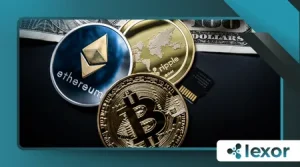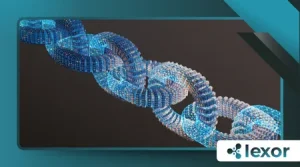Exploring Solana: The Fast, Low-Cost Blockchain

In the rapidly evolving landscape of decentralized technology, Exploring Solana offers a compelling glimpse into a network designed for speed and scale.
This blockchain has quickly cemented its position as a major contender, challenging established giants with its innovative architecture.
The focus here is on efficiency, aiming to bring mainstream utility to the masses.
Solana’s design philosophy fundamentally addresses the blockchain trilemma: achieving decentralization, security, and scalability simultaneously.
Many legacy chains struggle to balance these elements, often sacrificing speed for security. Solana seeks a different path entirely.
The network’s distinguishing feature is its phenomenal throughput capacity. Transactions are processed with near-instant finality, a stark contrast to the sluggish speeds of earlier generations.
This speed is crucial for decentralized applications (dApps) that require real-time interaction.
The Architecture Driving Unprecedented Speed

At the core of Solana’s high performance is a suite of unique architectural innovations. These aren’t just minor tweaks; they represent a significant departure from traditional blockchain mechanics.
They allow the network to handle massive transaction volumes efficiently.
The most notable of these is Proof-of-History (PoH), a cryptographic clock that orders transactions before they are added to the ledger.
This mechanism reduces the communication overhead typically required for nodes to agree on time. PoH is not a consensus mechanism itself, but rather a critical component enhancing speed.
Another key feature is Tower BFT, Solana’s version of the Practical Byzantine Fault Tolerance consensus. It leverages the PoH clock to achieve consensus quickly and efficiently.
Validators can effectively “lock in” their votes without waiting for the entire network.
++Immersion in Extended Reality (XR): Metaverse and virtual worlds in early childhood education
The Gulf Stream transaction forwarding protocol helps validators process transactions proactively. It bypasses the mempool concept, a source of congestion on other chains.
This streamlined process ensures a continuous flow of data.
Low Transaction Costs: A Gateway to Mass Adoption
A major hurdle for many blockchain users is the volatile and often exorbitant cost of transaction fees, or “gas.” Solana solves this problem, making micro-transactions economically feasible for everyone.
++What Is Proof of Work in Cryptocurrency?
The typical transaction fee is a fraction of a penny.
This economic model is vital for applications requiring numerous on-chain interactions.
Consider the world of Decentralized Finance (DeFi); frequent trades or lending operations become prohibitively expensive elsewhere.
Solana opens the door for a wider array of low-value, high-frequency activities.
Furthermore, low fees dramatically lower the barrier to entry for developers and users alike.
++What Is a DAO? A Beginner’s Guide to Decentralized Organizations
New projects can launch and scale without the crippling overhead costs associated with high-gas environments. This fosters a vibrant ecosystem of innovation.
Real-World Utility and Ecosystem Growth
The speed and low cost have naturally attracted a diverse and rapidly expanding ecosystem. Projects across various sectors are choosing Solana as their foundation.
This growth validates the network’s technical claims.
The NFT (Non-Fungible Token) market, for instance, thrives on Solana.
++What Is Solana? A Quick Guide to the Fast-Rising Blockchain
Artists and collectors benefit from swift, cheap minting and trading, unlike the costly and slow experience on some competing chains. This is a clear-cut advantage for digital creators.
Example 1: Imagine a popular play-to-earn game built on Solana where players earn tokens for completing daily quests.
With near-zero transaction costs, the game can process thousands of in-game micro-rewards instantly, creating a seamless user experience. This level of utility is often impractical on costlier chains.
The platform is also making significant inroads into enterprise solutions.
Its high throughput is perfectly suited for managing large volumes of data or assets in supply chain logistics or digital identity verification.
Solana is demonstrating that its technology extends far beyond simple cryptocurrency transactions.
Example 2: A global company could use Solana to issue digital vouchers to millions of customers worldwide.
The low cost ensures the value of the voucher isn’t absorbed by transaction fees, and the speed allows for instantaneous redemption at the point of sale.
Security and Decentralization: The Trade-Offs
While speed is a major selling point, a serious journalistic perspective demands a look at the trade-offs.
Concerns have been raised, primarily around network stability and centralization, following notable outages in the past.
The network requires powerful, high-specification hardware to run a validating node.
This requirement, while necessary for speed, can limit the number of participants who can afford to run a validator.
Consequently, this leads to a slightly higher degree of centralization compared to networks designed for lower hardware requirements. This is the constant tension in the trilemma.
However, the Solana Foundation and core developers are continually implementing upgrades and improvements.
The goal is to enhance decentralization over time, mitigating the risks associated with dependency on high-spec hardware.
The network’s security budget is robust, with significant staking participation protecting the chain.
According to a report from Messari’s “State of Solana Q1 2024”, the number of active validators on the Solana mainnet increased by 15% year-over-year, showcasing a positive trend in decentralization efforts.
This statistic highlights a committed move towards greater network robustness.
Table 1: Comparative Blockchain Metrics (Hypothetical Averages)
| Feature | Solana | Major Competitor A (PoW) | Major Competitor B (PoS) |
| Average Transaction Fee | < $0.001 | $5 – $50 | $0.10 – $1.00 |
| Transactions Per Second (TPS) | ~3,000 – 50,000+ | ~10 – 20 | ~50 – 2,000 |
| Finality Time | Seconds | Minutes | Minutes |
Note: TPS is based on real-world averages and network stress levels. Solana’s theoretical max is much higher.
The Future of High-Performance Blockchains
Exploring Solana is more than an academic exercise; it’s an investigation into the future of decentralized computing.
The platform’s commitment to low latency and high throughput positions it as a genuine platform for Web3’s potential. Solana doesn’t just promise scalability; it delivers a working model.
The analogy here is simple: if early blockchains were like a slow, single-lane road, Solana is a digital hyperloop.
It’s built for the speed required to onboard billions of users and process the complex interactions of a truly decentralized internet. This network is designed for the modern digital age.
The relentless pace of innovation on Solana, coupled with its passionate developer community, suggests a bright future.
The issues of stability are being addressed, and the value proposition remains undeniable.
Given its technical foundation and growing ecosystem, can any blockchain truly compete without addressing the fundamental need for speed and affordability?
Exploring Solana confirms that the race for the fastest, most efficient blockchain is far from over.
It is a network that embodies the spirit of aggressive, performance-focused development. This approach could be the catalyst that finally brings blockchain technology to the mainstream.
Conclusion: Exploring Solana‘s Impact
Exploring Solana reveals a network that prioritizes the user experience through performance.
By significantly reducing costs and increasing speeds, the platform offers a powerful foundation for the next generation of decentralized applications.
It remains a key pillar in the ongoing evolution of the Web3 space. Exploring Solana should be a priority for anyone monitoring the future of digital finance and decentralized technology.
Frequently Asked Questions
What is the primary innovation that makes Solana so fast?
The core innovation is Proof-of-History (PoH), which acts as a reliable cryptographic clock.
PoH allows transactions to be ordered and validated quickly, significantly increasing throughput and reducing the time validators spend agreeing on the sequence of events.
Is Solana considered a decentralized network?
While Solana aims for decentralization, the high hardware requirements for running a validator node have historically led to some concerns about the concentration of staking power.
However, the network is actively increasing the total number of active validators, improving its decentralization metrics over time.
What is Solana primarily used for today?
Solana is used for a wide range of applications, including high-speed DeFi (Decentralized Finance) protocols, NFT (Non-Fungible Token) minting and marketplaces due to its low fees, and various gaming platforms that require frequent, low-cost micro-transactions.
